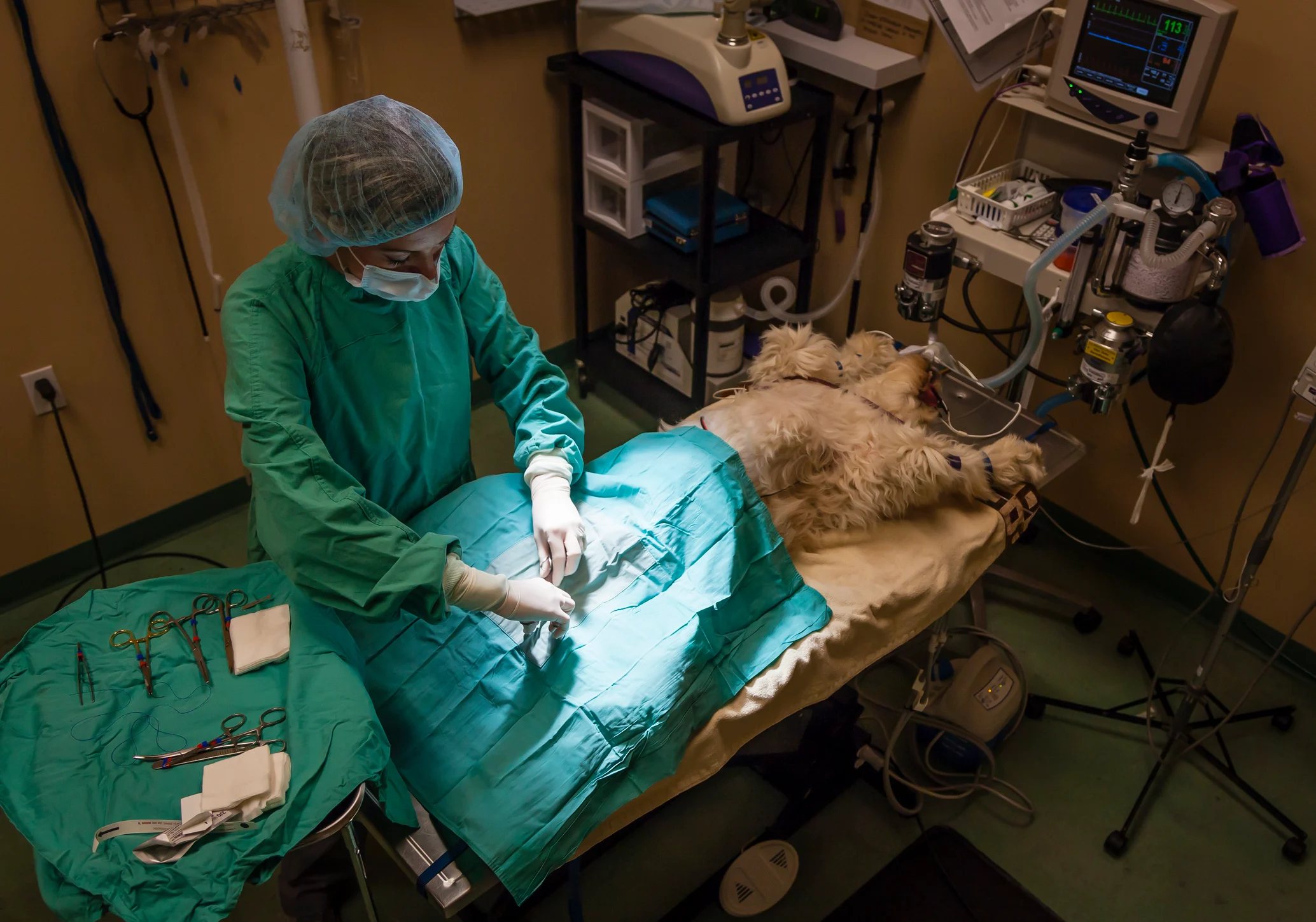
In the Literature
Gant JW, Collins JE, Miller ZA, Einsporn RL. Influence of skin preparation on surgical site infection and lift of adhesive surgical drapes. Vet Surg. 2025;54(3):478-485. doi:10.1111/vsu.14198
The Research …
This study evaluated surgical site infection (SSI) rates following use of 2% chlorhexidine scrub and 70% isopropyl alcohol (2% CHX/70% IPA) versus 0.7% iodophor and 74% isopropyl alcohol (iodophor/74% IPA) for final patient scrub. Skin adherence of an iodophor-impregnated surgical drape and impact on SSI rates were also examined. The authors hypothesized that iodophor/74% IPA would outperform 2% CHX/70% IPA in SSI prevention and reduce drape lift (ie, elevation/detachment of the drape from the skin) compared with the historically reported lift rate of 66%.1
SSI data for the 2% CHX/70% IPA final scrub (n = 653) were collected retrospectively. SSI data for the iodophor/74% IPA scrub (n = 435) were collected prospectively. Surgical procedures were categorized as clean, clean-contaminated, or contaminated. SSI diagnosis was made based on standardized criteria.2,3 In cases in which an iodophor-impregnated drape was used, presence or absence of drape lift was documented and classified as significant (>10 mm) or not significant (≤10 mm).
A nonsignificant SSI rate difference (1.8%) was found between the 2% CHX/70% IPA (SSI = 9.2%) and iodophor/74% IPA (SSI = 7.38%) groups. Differences in SSI rate were noted within surgical categories; however, these differences did not reach significance. Higher body weight and glutaraldehyde use for instrument sterilization were linked to SSIs. Significant adhesive drape lift occurred in 13.2% of cases and was associated with a 2.72 times increased risk for SSI.
… The Takeaways
Key pearls to put into practice:
For clean surgeries, either iodophor/74% IPA or 2% CHX/70% IPA are acceptable final preoperative skin preparation solutions.
For clean-contaminated and contaminated surgeries, iodophor/IPA can be considered. Although this study did not demonstrate significance, iodophor/IPA can reduce bacterial load, maintain an extended period of antimicrobial activity, and be resistant to wash off.4
In the author’s experience, iodophor/IPA is well-tolerated and can be applied to cats and dogs, as well as avian and reptile species.
For clean surgeries requiring surgical implants, the author routinely uses iodophor/IPA and iodophor-impregnated surgical adhesive drapes. The drape creates a physical barrier that prevents intraoperative contact between implants and nonsterile skin. In addition, iodine-impregnated adhesives ensure sustained antimicrobial activity, even if the initial skin preparation is compromised by irrigation or bleeding. When adhering the drape to the skin, extra attention must be paid to bleeding control, especially during skin incision and subcutaneous dissection. Blood seeping between the drape and the skin causes drape lift, and entrapment of blood may increase bacterial regrowth, potentially increasing the SSI rate.
Glutaraldehyde is primarily used for cold sterilization of instruments but has gradually fallen out of favor due to limitations (eg, long processing time, need for sufficient rinsing) and is only used for noncritical instruments at the author’s institution.
Higher body weight was associated with an increased risk for developing SSIs, which aligns with prior research.5 Heavier animals may have more subcutaneous tissue, which can reduce blood supply to the surgical site, impair wound healing, and create a more favorable environment for bacterial growth.6,7 Procedures on larger patients often require longer operative times and larger incisions, both of which are independently associated with higher risk for SSI.8
You are reading 2-Minute Takeaways, a research summary resource presented by Clinician’s Brief. Clinician’s Brief does not conduct primary research.